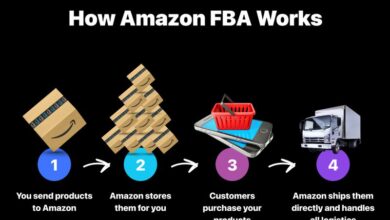How To Introduce Artificial Intelligence (AI) In Your Business
How To Start With AI In Your Business
A lot of businesses have been working on artificial intelligence programs for years, and they’re still getting ready to take off. In fact, automated centers are popping up all over the world to give businesses the power to store and access data with AI programs. But what is an artificial intelligence program, and how can you start programming your own with AI in your business?
Crowdfunding platforms like Indiegogo, Indopay and others make it an option for businesses who want to reach out to their fan base through crowdfunding. It’s a great way for small businesses to get their brand out there before launching big products. But do you know where to begin with creating your own AI program? Here are some basic steps:
Set Up an AI Platform
When it comes to AI in your business, there are a number of ways to go about it. You could hire a data engineer to write software that runs on your behalf. You can also use an AI startup to create a data-driven platform that can be used by employees and managers. A data engineer is someone who specializes in structured data analysis and apps that run on behalf of companies. Data engineers work on platforms that allow companies to collect and analyze huge volumes of data. A data platform is a software solution that runs on behalf of a company. AI startups use data platforms to gather massive volumes of data. They could also use a business’s customer data to build accurate applications.
Set Up an AI Service
While you don’t need a data platform to run an AI business, it’s helpful to have one in place should you want to add AI to your organization. You can use an AI optimization service to optimize your business’s data collection, detection and handling. Some of the best-known AI optimization services include Cloudinary, AI Executioner, and Inception. They can help you collect and store tons of data, effectively turn your data into a cloud of data.
Build a AI Guide
If you’re intent on using AI in your business, you’ll first need to create a guide for using AI. This step can be a little challenging, and it’s something you might want to take up after you’ve gotten to know your AI customer base. Thankfully, building a guide is easy. You can either go through the built-in guides that come with AI platforms or create your own. While you’ll likely have to spend some time getting used to building your AI platform, it’s a great way to learn the ins and outs of building a large-scale AI solution.
Create a Video Course on Artificial Intelligence
If you’re spending time learning AI, you’ll likely want to create an AI video course. This is the perfect place to share your learning. You can either find a video course online or create your own. Artificial intelligence is not new. It’s been implemented in robots and other automation devices for years. The ability to create AI videos is a great way to bring the power of AI to life. You can host your videos on YouTube or another online video hosting service.
Create an AI Marketing Campaign
If you want to become more profitable with AI, it’s essential to conduct a marketing campaign. This means holding events and creating content that can be used by potential customers or investors. You can host your campaign on your own website or on a blogging platform. If you choose to host your marketing campaign in your office, you can easily find customers. From there, you can easily collect and analyze customer data to create meaningful content and educate potential customers about your business.
Develop AI Apps for Your Business
Apps that allow you to create and manage AI services for your business are another great way to bring AI power to life. This includes service-level agreements (SLEs) and business continuity plans (BPPs). Both of these types of apps need to be created for your business. You’ll likely need to create an SLE for managing your AI platform and a BPP to manage your business’s digital transformation.
Set Up an AI Content Strategy
Once you’ve created an AI content strategy, it’s important to break down your goals into smaller goals. These can all be further broken down into smaller goals such as “Run a community event with AI technologies” or “Find a partner with AI capabilities” These goals can help you stay focused and avoid getting lost in the weeds of building an AI product. They also help you stay on top of the latest data and trends. You can use the goals to help your team understand their goals and work towards achieving them.
Use a Data Warehousing Model
Once you’ve broken down your AI goals into smaller tasks, it’s time to put them into action. You can use data Warehousing models to create a data warehouse in your software to store your AI data. These types of software enable you to store massive volumes of data. You can then use an AI program to identify data values and create reports about them. This information can then be insight-driven and used to build effective AI apps.
Learn the Platforms Language
Once you’ve got a good understanding of the different AI platforms and how they work, it’s time to learn the languages that they run on. You can learn a lot about AI with a basic knowledge of programming, and you can’t get past a basic introduction to the platform-specific languages.
Get to Know Your Audience
Once you’ve got a good idea of what type of AI you’re looking for in your business, it’s time to get to know your audience. This includes understanding who you’re targetting and what their pain points are. This is essential for building a great customer experience. Try to identify large demographics that are likely to be interested in your product or service. This can be a large portion of your target market. You can also try to identify what your target customers?realogr snack likes or dislikes.
Conclusion
The process of AI in business can be more than just an academic exercise. You need to put down your laptop and walk away from the AI platform with a new and valuable understanding of your customers, your business and your industry.





